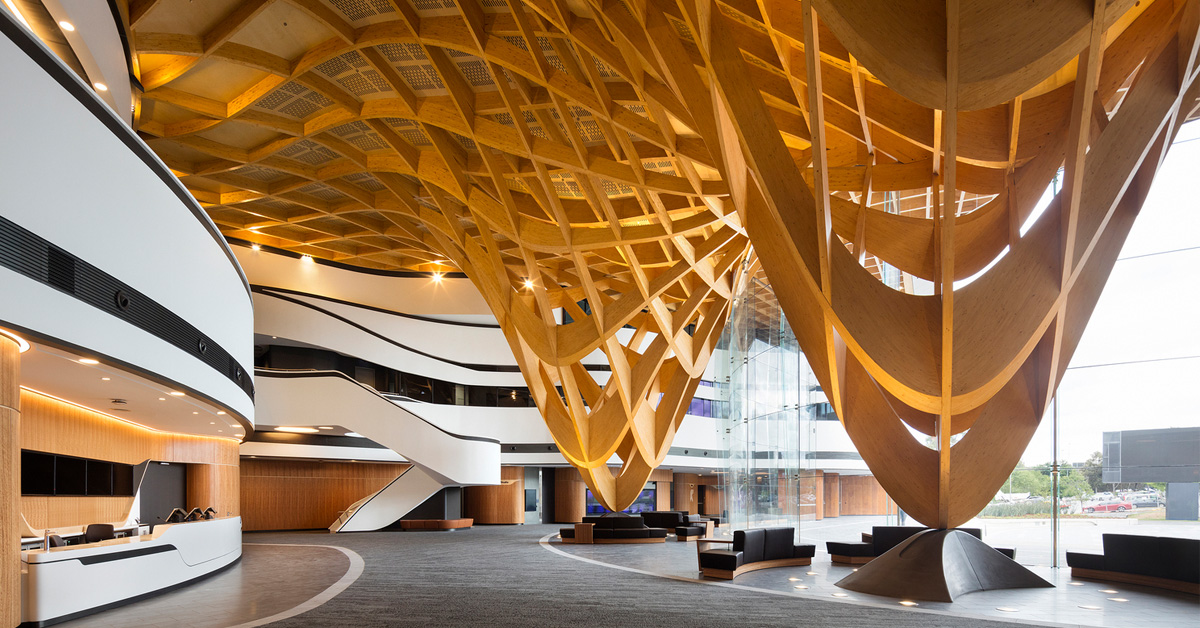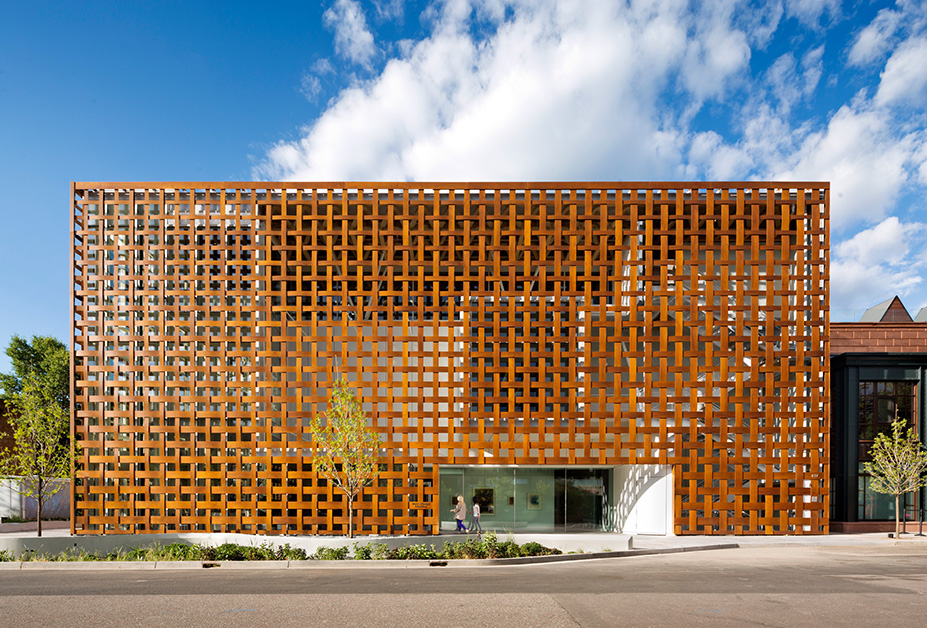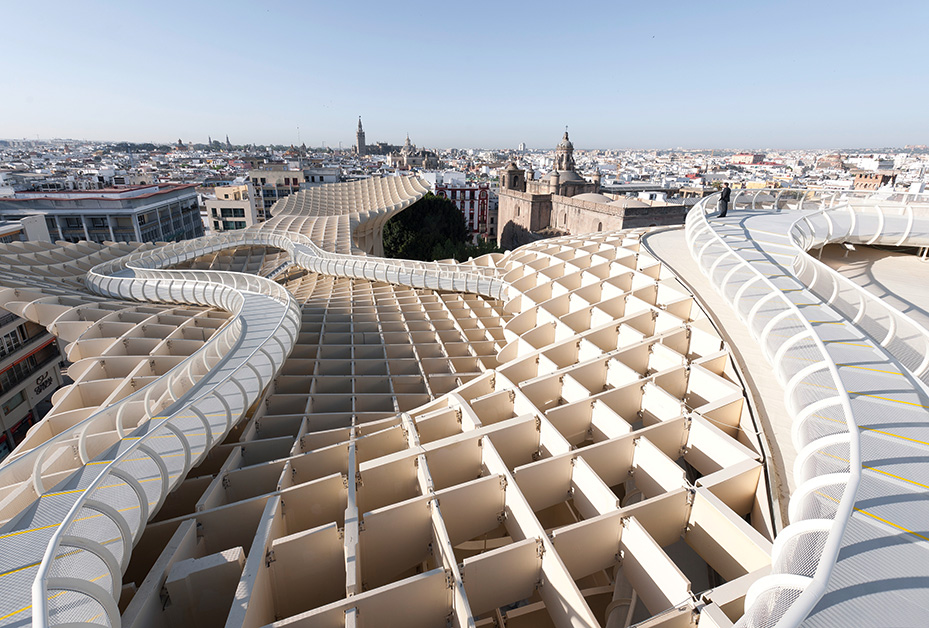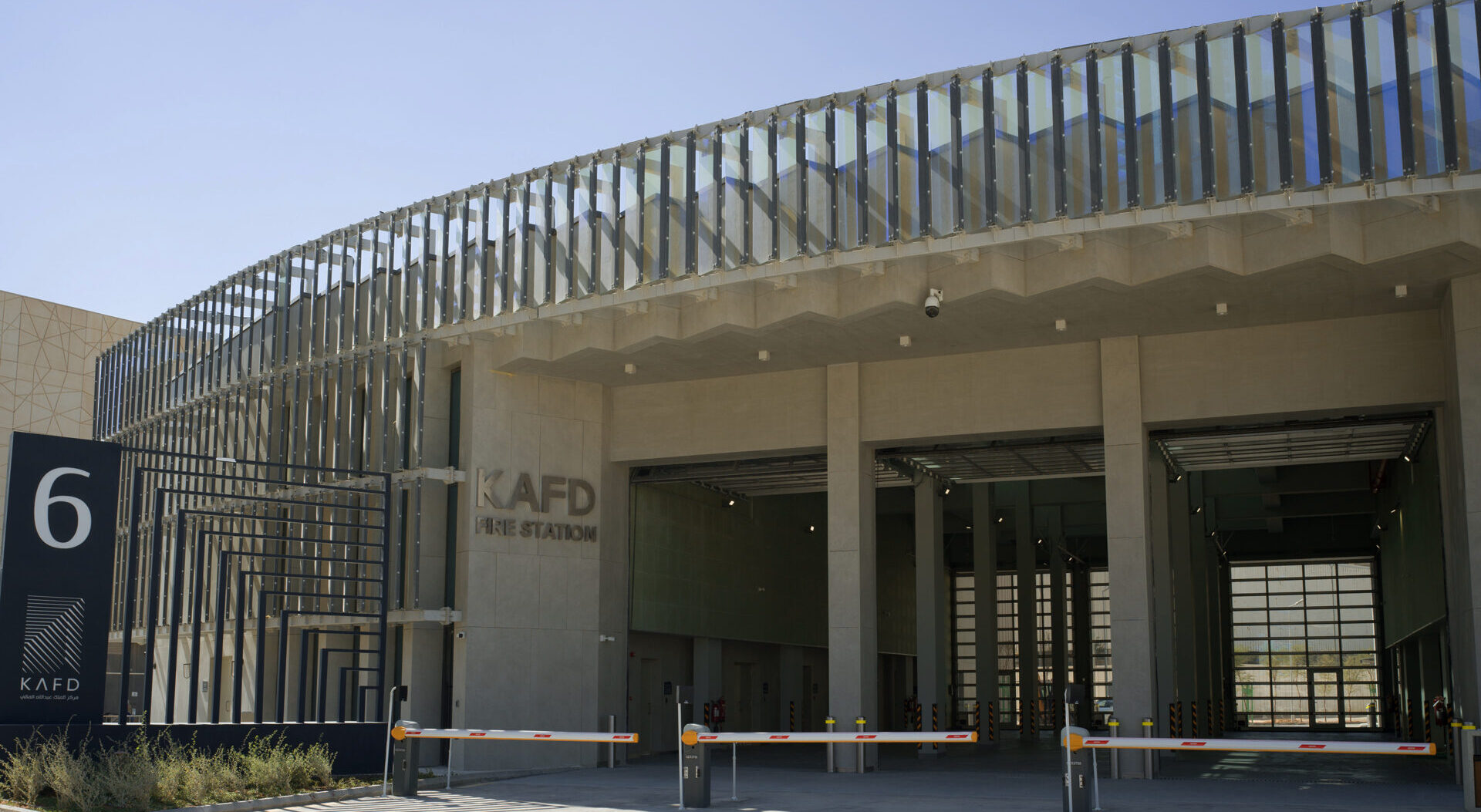 Bunjil Place, Melbourne, Australia. Francis-Jones Morehen Thorp, 2017. Photo © John_Gollings
Bunjil Place, Melbourne, Australia. Francis-Jones Morehen Thorp, 2017. Photo © John_Gollings .
Thanks to new innovations in wood construction, one of the oldest building materials may become the building material of the future. “Mass timber” products such as glued laminated timber and cross-laminated timber are being used for increasingly large structures. They offer environmental and cost benefits — and they don’t burn like ordinary wood.
Although wood structures are relatively rare in Saudi Arabia, the material is experiencing a global renaissance with new developments in engineered “mass timber” technology that make wood safer, stronger, and more sustainable than ever.
Nail laminated timber (NLT) is a versatile mass timber panel created by nailing together stacks of traditional dimensional lumber running in a single direction. Plywood sheathing can be added to give the panels additional lateral stability. It’s an old and widely accepted construction system that has recently seen a resurgence because of its affordability, efficiency, and sustainability.
Glued Laminated timber (Glulam or GLT) is an engineered wood system comprising stacked lumber bonded together with its grain running in the same direction. Compared to standard lumber, Glulam can be used to make larger and stronger beams, and can be shaped into curved forms or arches. The use of Glulam beams flourished after the Second World War thanks to technical advancements in moisture-resistant adhesives.
One of the more recently developed — and most promising — methods of heavy timber construction is known cross-laminated timber (CLT). Its use as a bona fide material was recognized in 2015 through new provisions of the International Building Code. CLT is a composite panel system made by layering and gluing together sheets of dimensional lumber in alternating perpendicular directions. Like Glulam, CLT panels can be prefabricated and shaped into a variety of components. But it offers additional benefits over other kinds of timber: improved fire-proofing, improved aesthetics, improved strength, and the ability to span in either direction, making it incredibly versatile.
Despite these advances, few current designs for timber buildings surpass 10 to 15 stories. Mid-rise buildings are currently the most economically viable options for wood construction. However, recent conceptual projects are pushing the limits of what’s possible with mass timber: The Hyperion is a 57-meter-tall CLT structure currently under construction in Bordeaux, France; in Stockholm, a political party commissioned a conceptual design for a 133-meter tower; and in London the University of Cambridge Center for Natural Material Innovation created a conceptual design for a Supertall structure nicknamed “The Splinter.” If built, the proposed 80-story CLT building would be the second tallest structure in London after The Shard.
As wood buildings grow, so too does the concern about wood construction — especially with regard to fireproofing. Wood burns. But there is a difference between wood planks and the thick, tremendously dense members used in the new generation of mass timber systems. These new timber products don’t burn like traditional lumber, but, when exposed to fire, char to form a natural protective layer around the core of the panel. Architectural interiors can, therefore, be imbued with the natural beauty and warmth of wood without the need for additional fireproofing.
A 2013 study published in the Journal of Sustainable Forestry argues that using wood as primary construction material could reduce up to 30 percent of global CO2 emissions. The study suggests that not only does timber require less energy to produce than most other building materials, but it can also absorb carbon from the atmosphere. And because mass timber panels can be created from young or damaged trees, its production encourages sustainable forestry. Sustainable forests mean sustained carbon sequestering. We remain a bit skeptical about this line of reasoning about the environmental benefits of wood construction, but we also remain open to further exploration.
Mass timber panels are turning wood into a viable structural alternative to concrete or steel. And they have the potential to dramatically transform almost every aspect of the building industry.













































